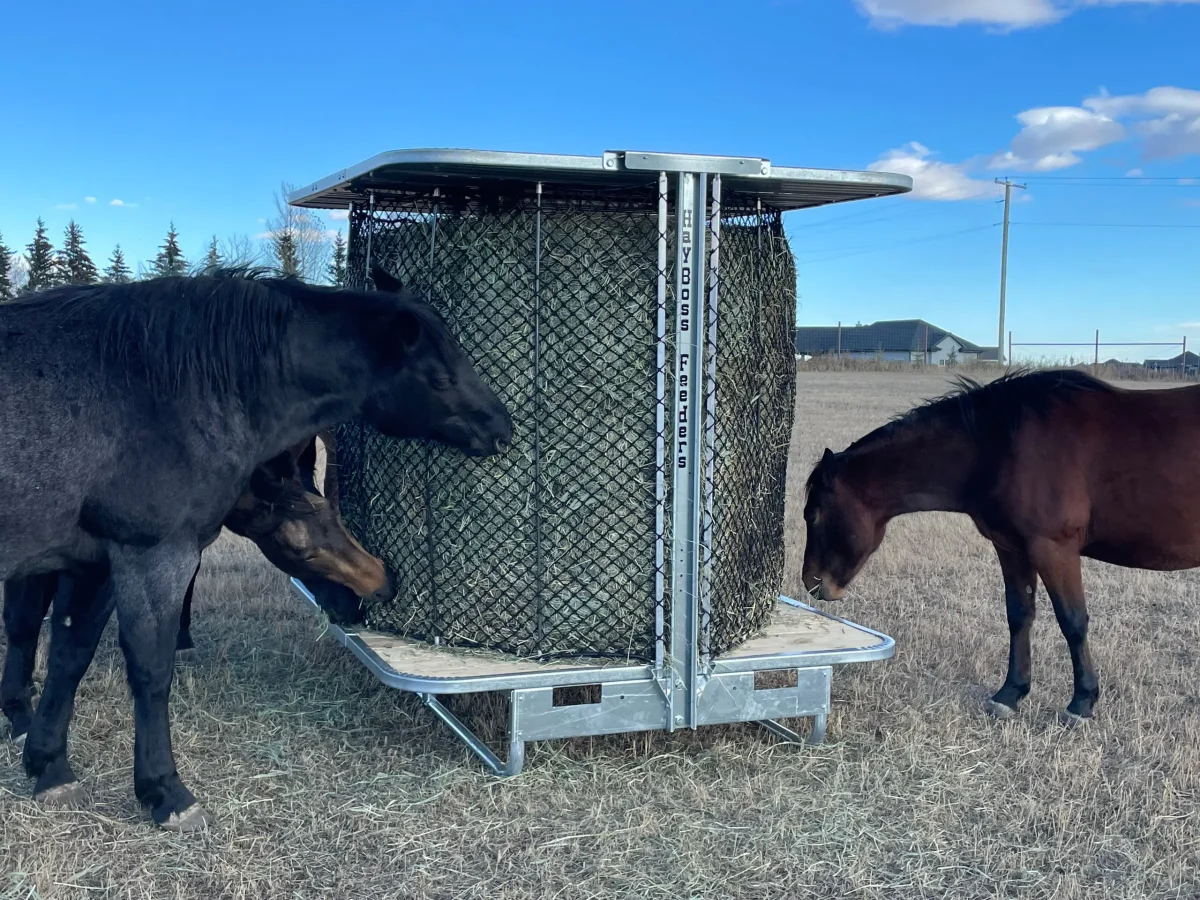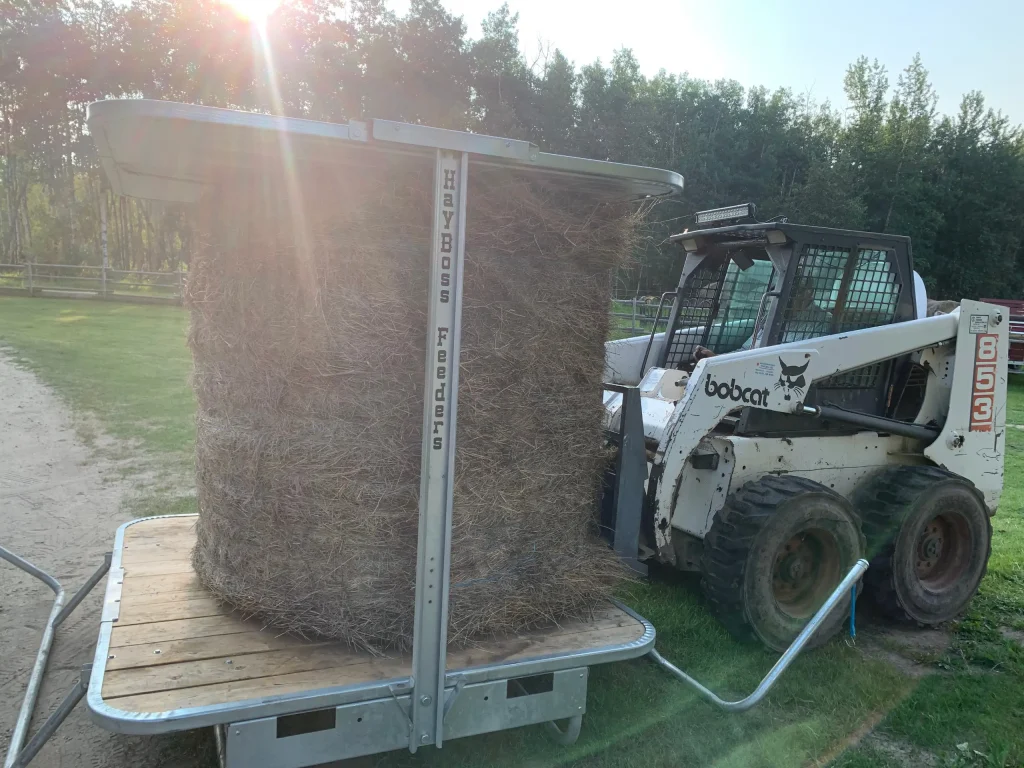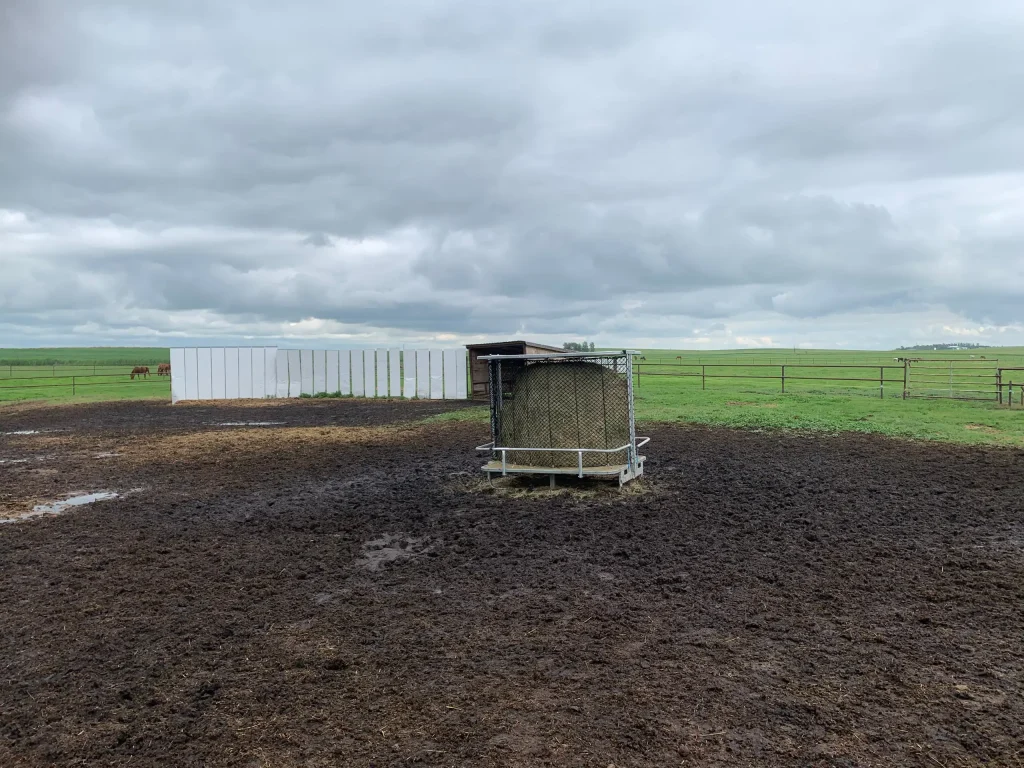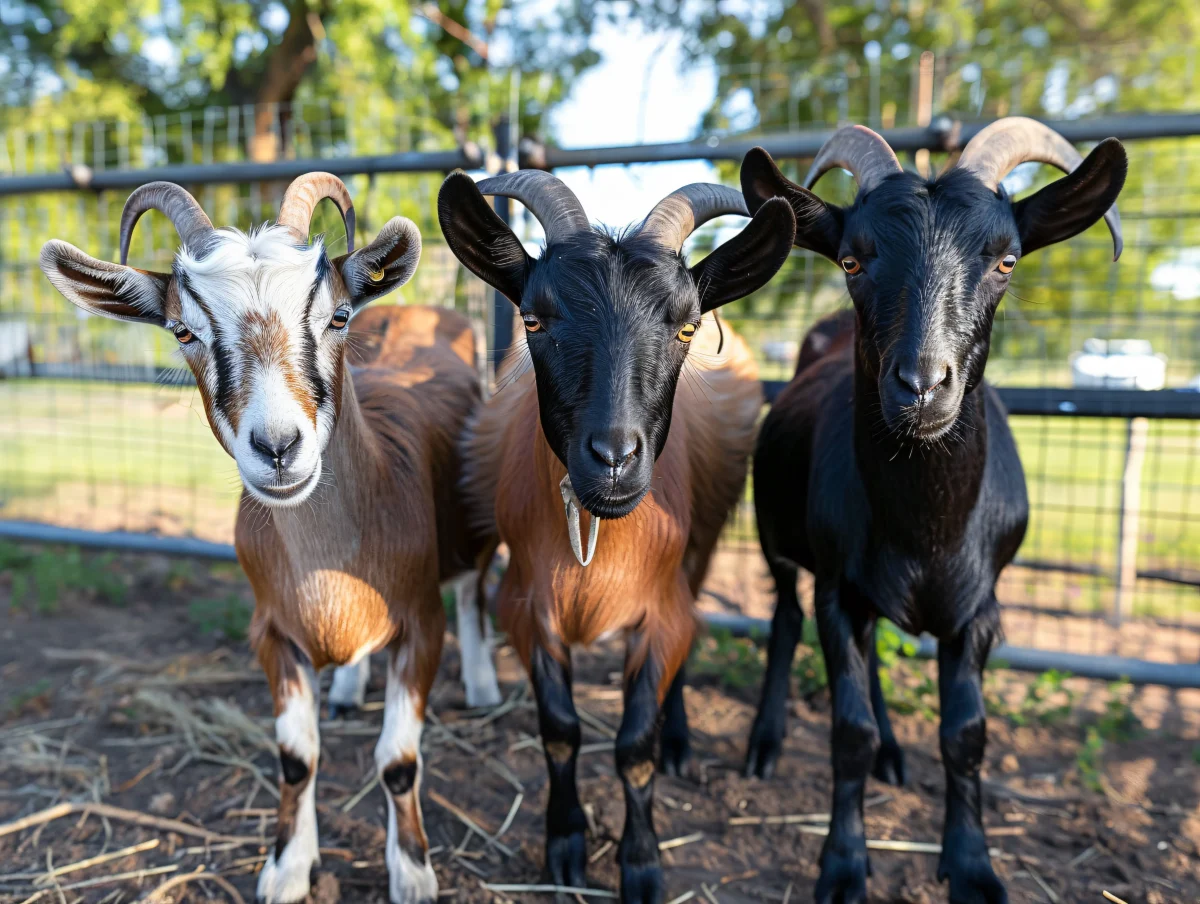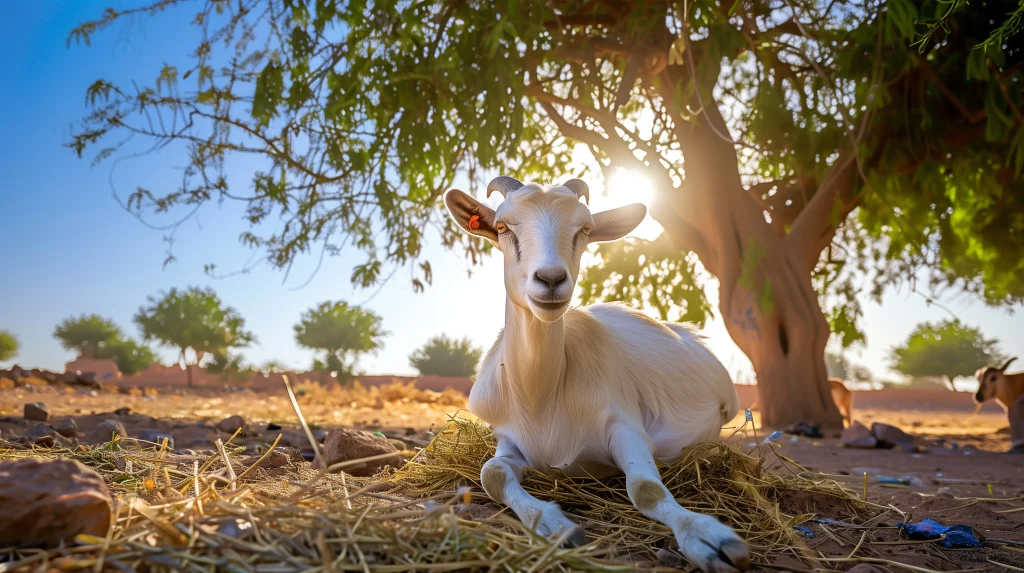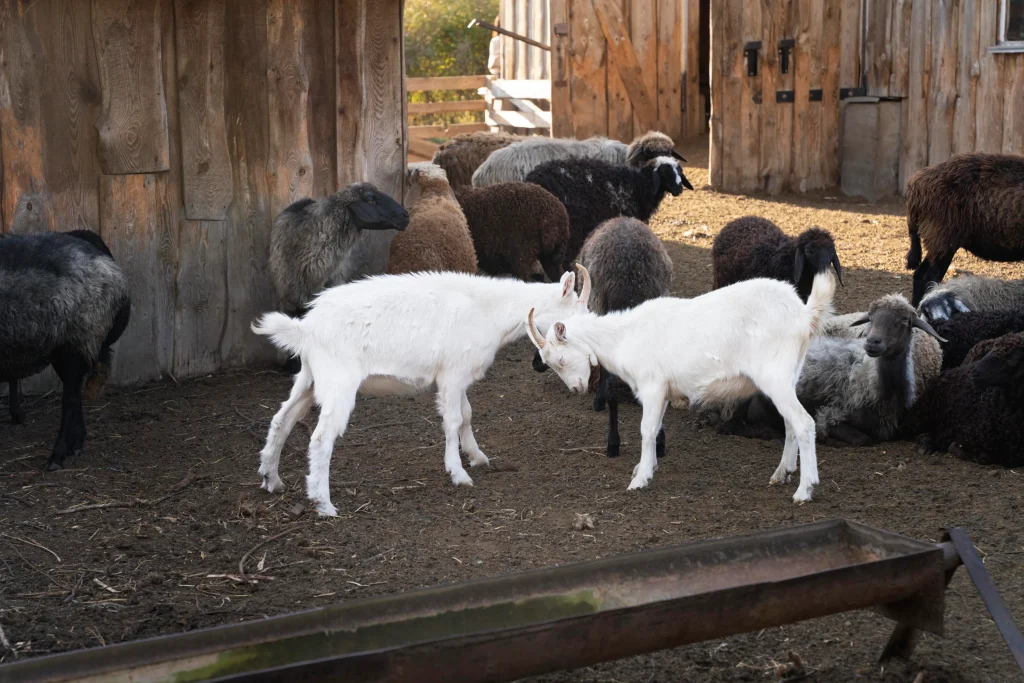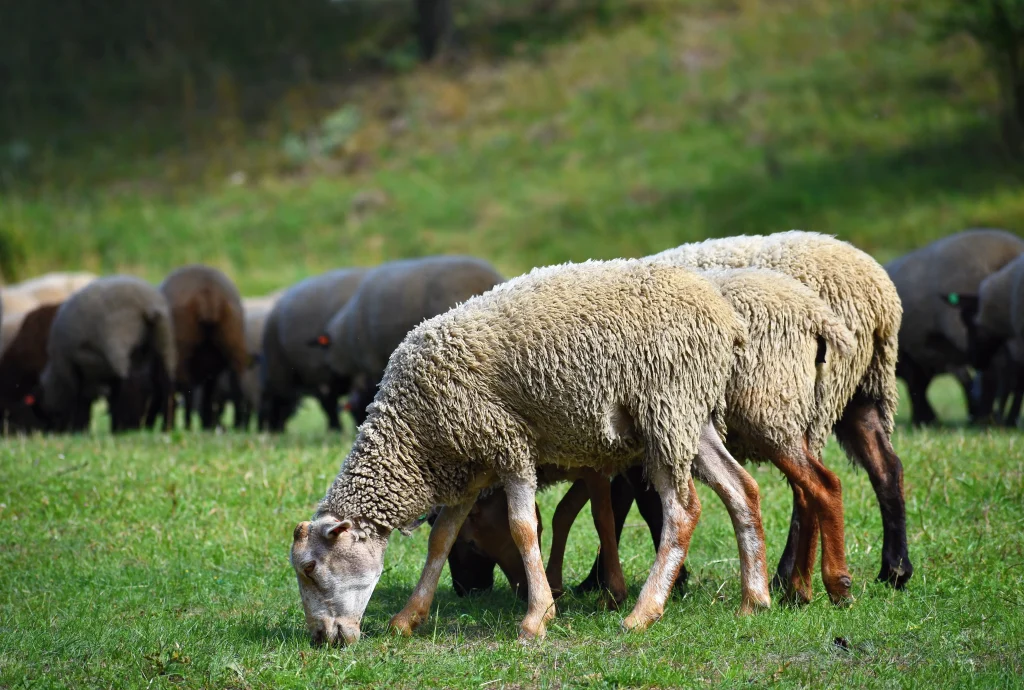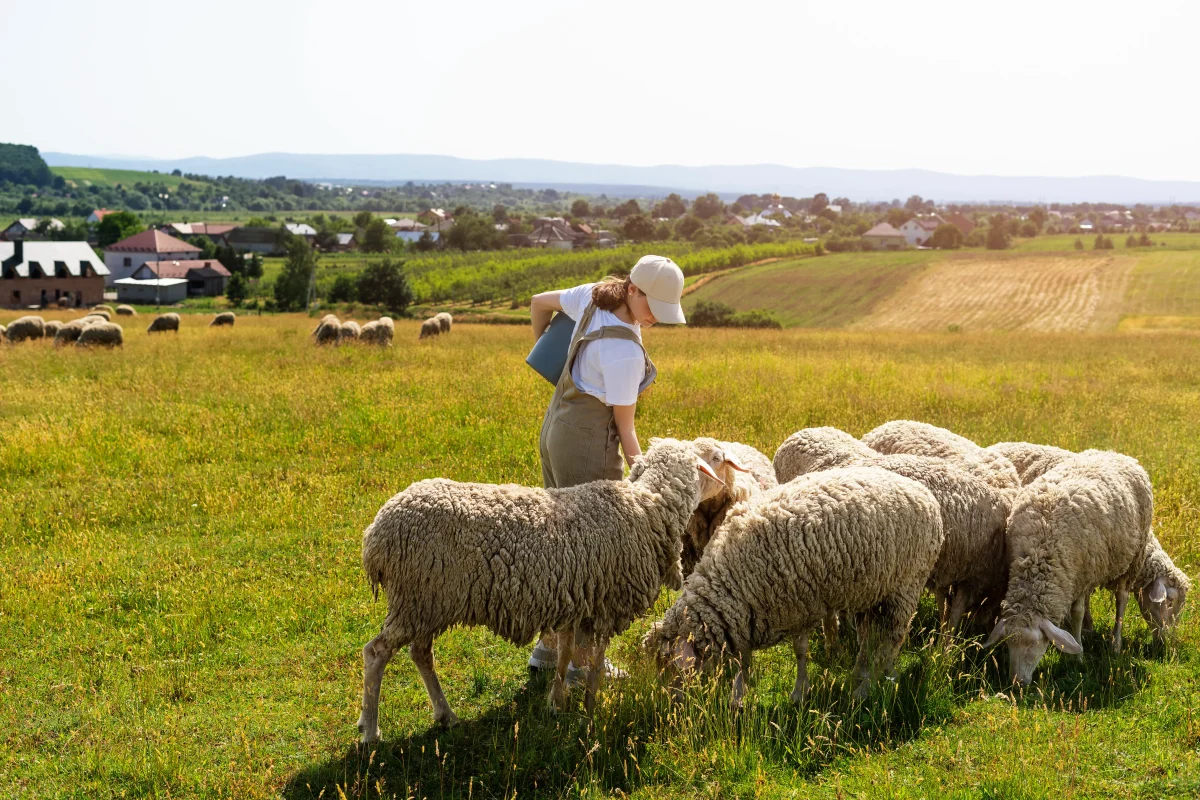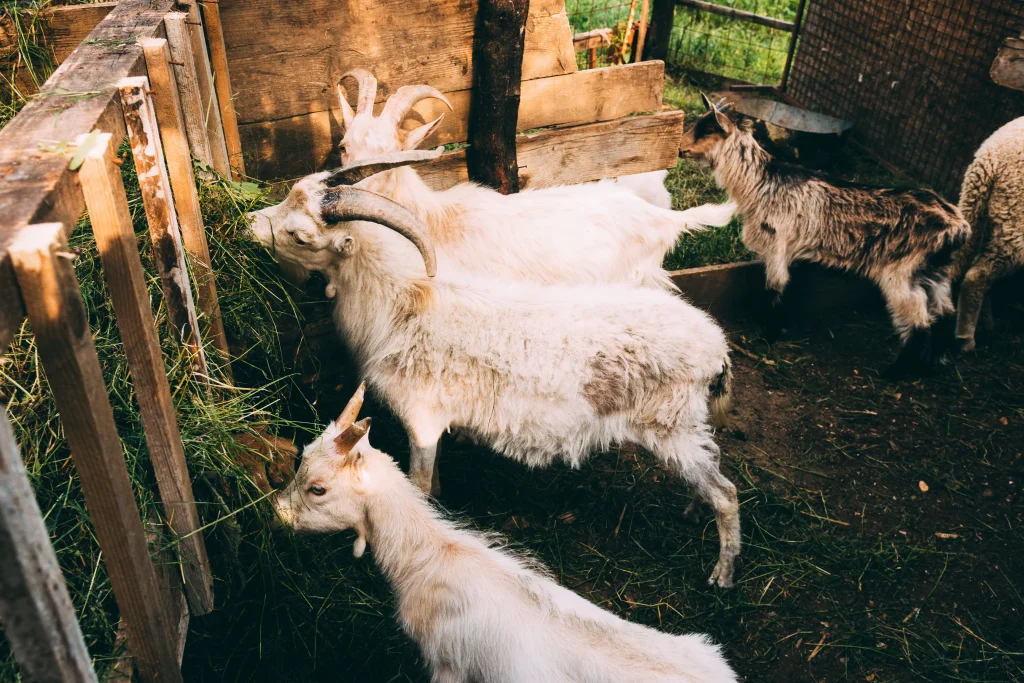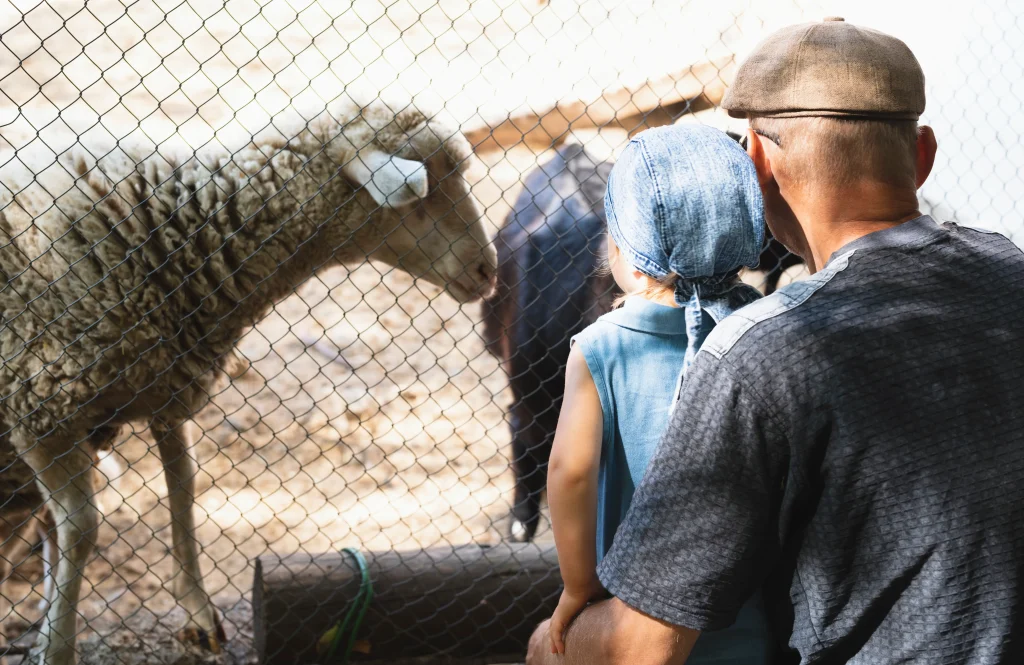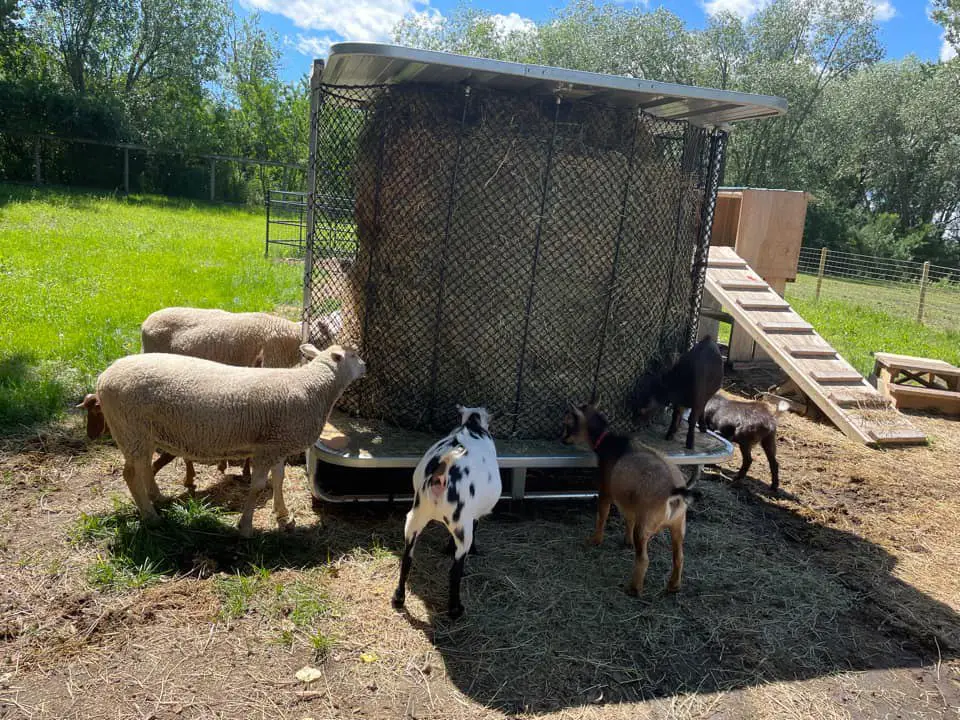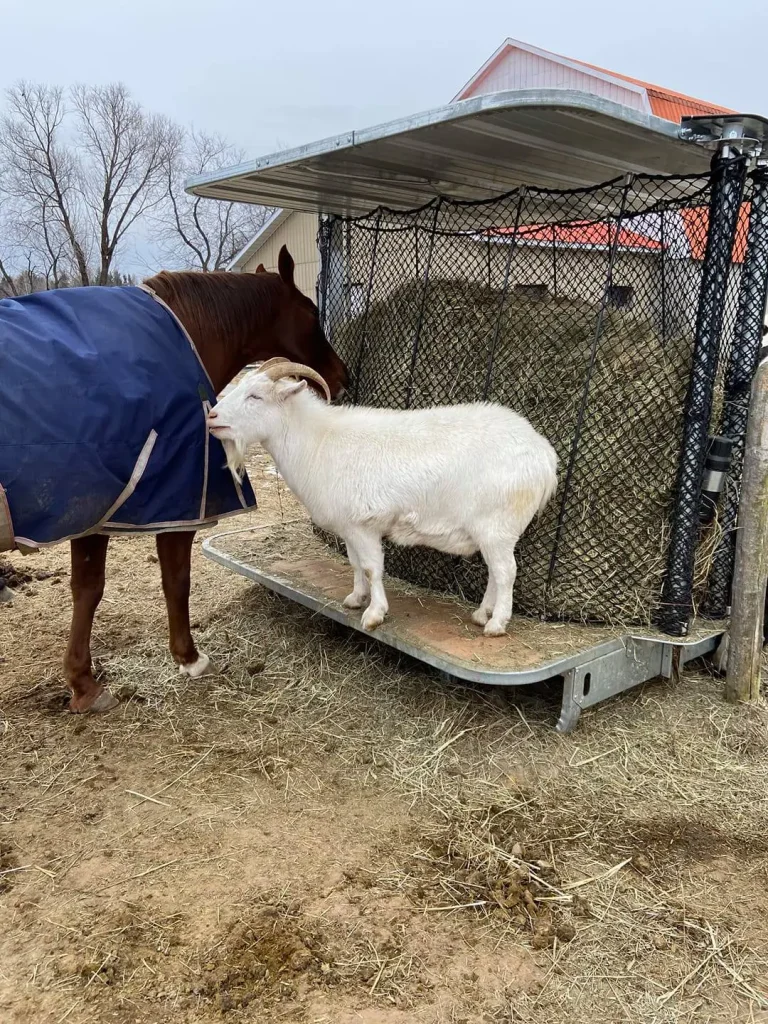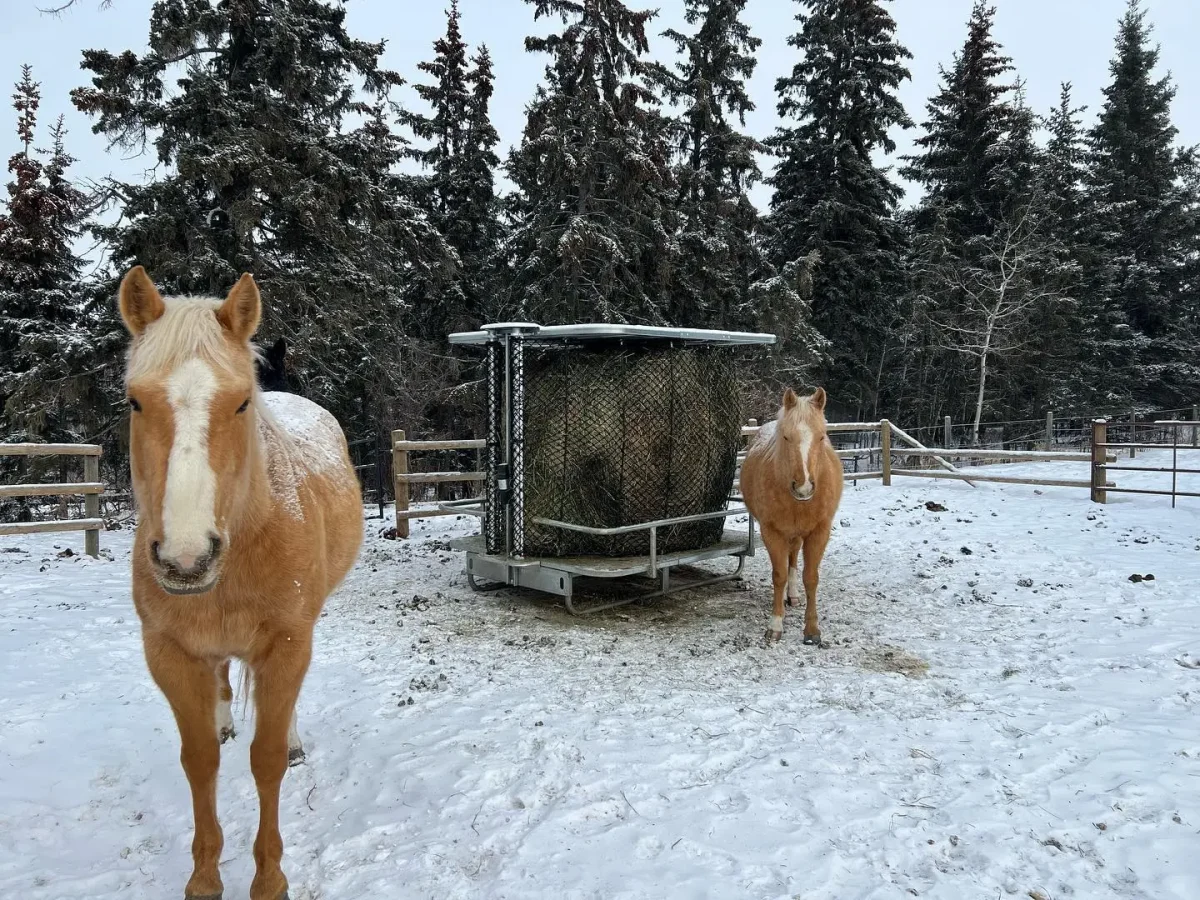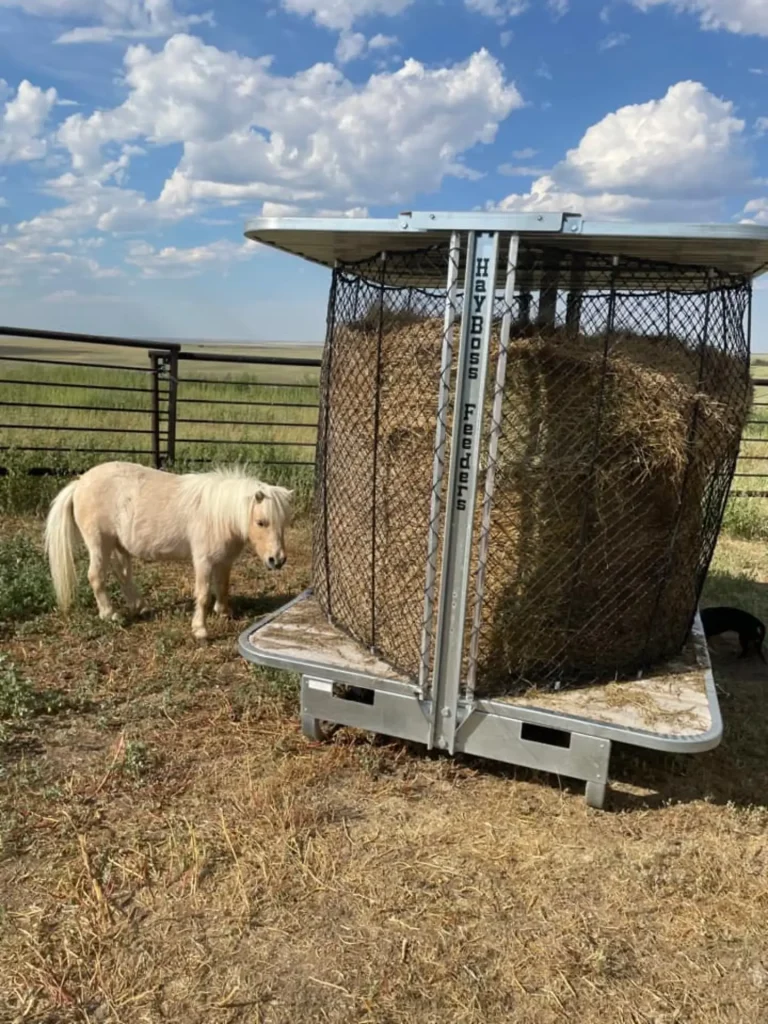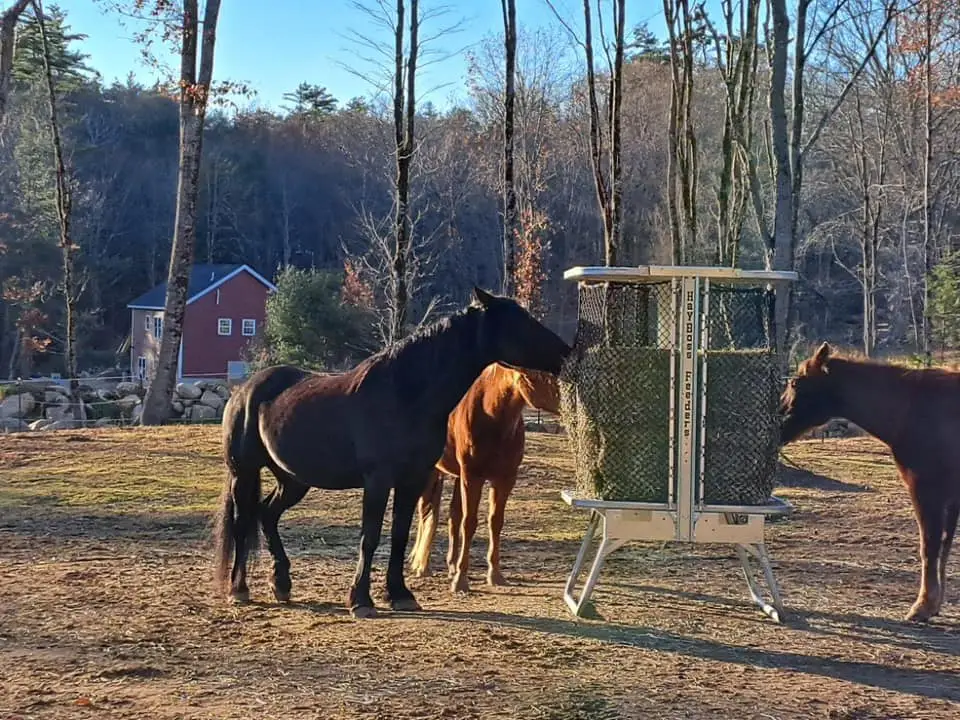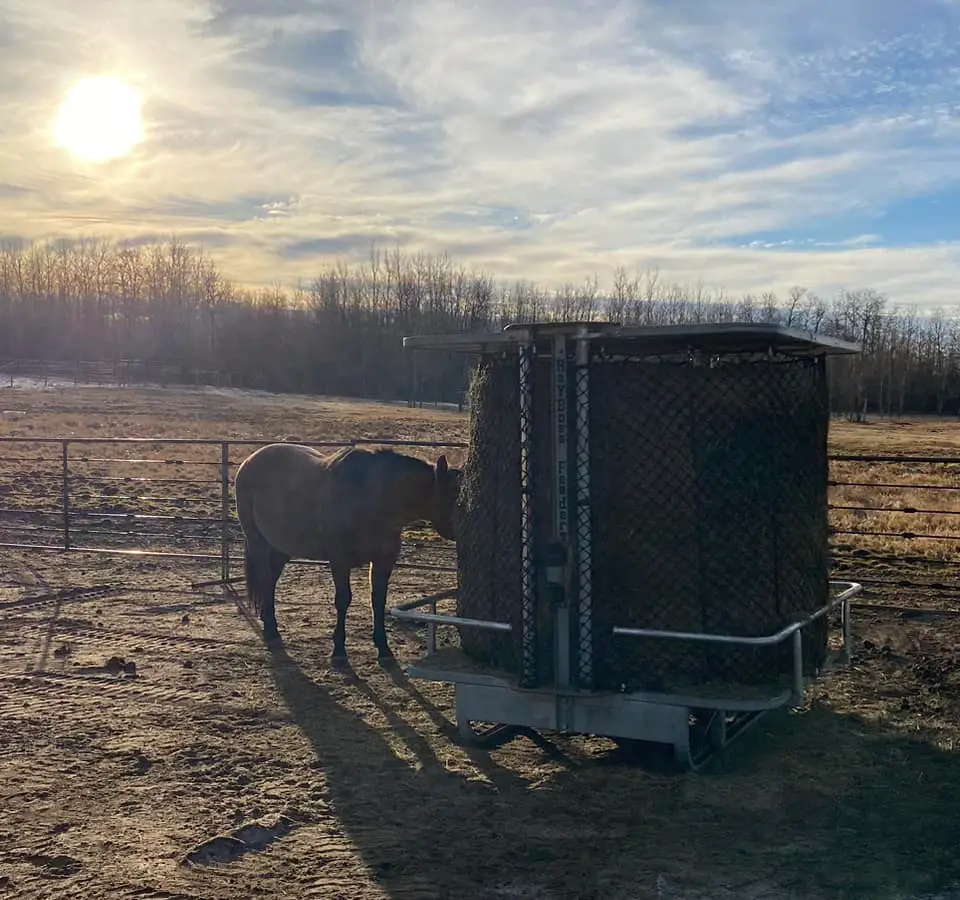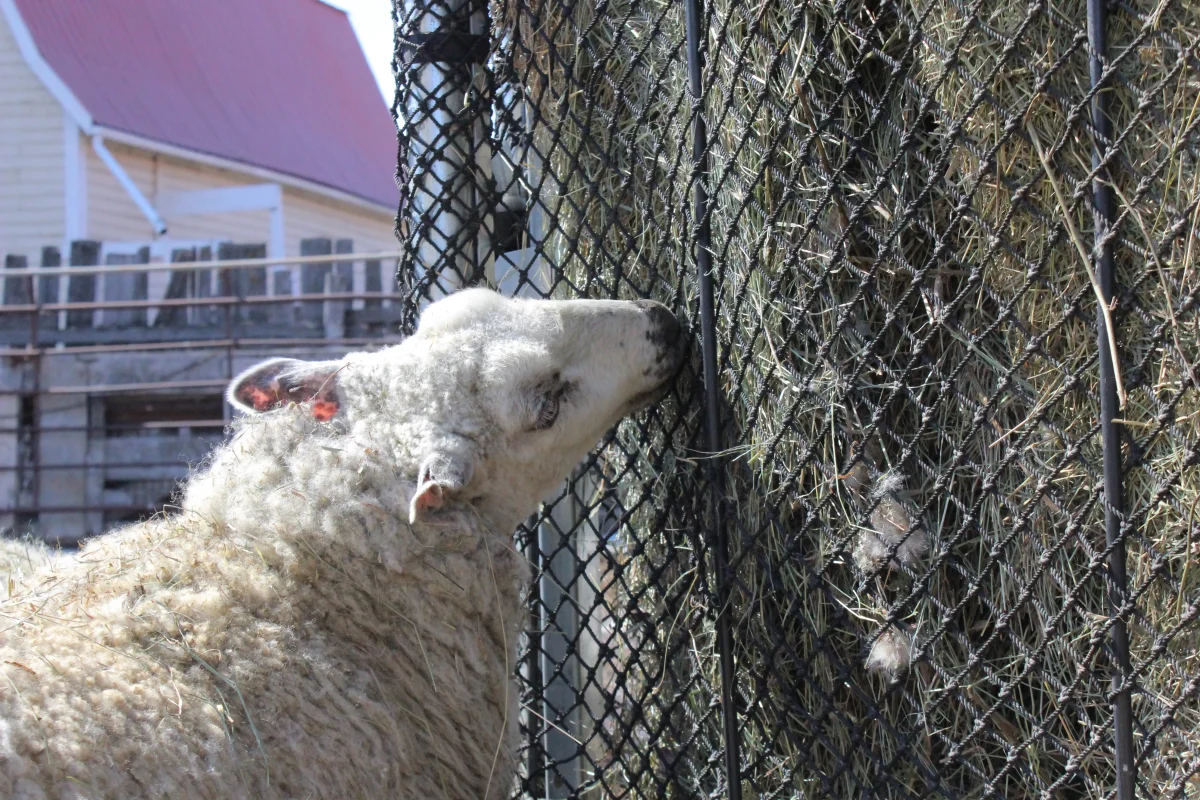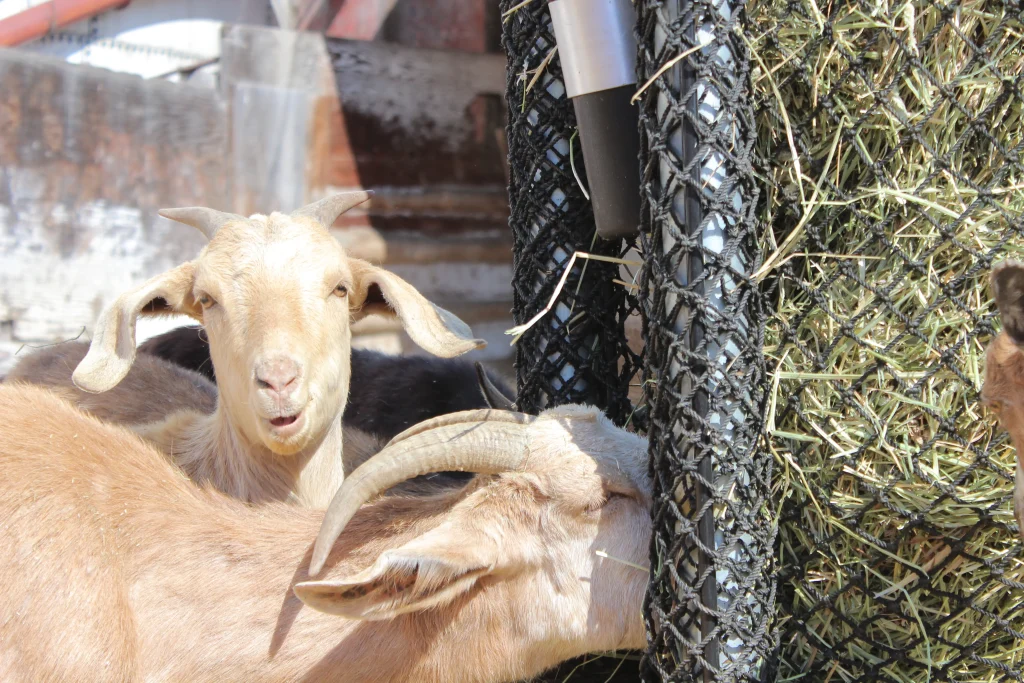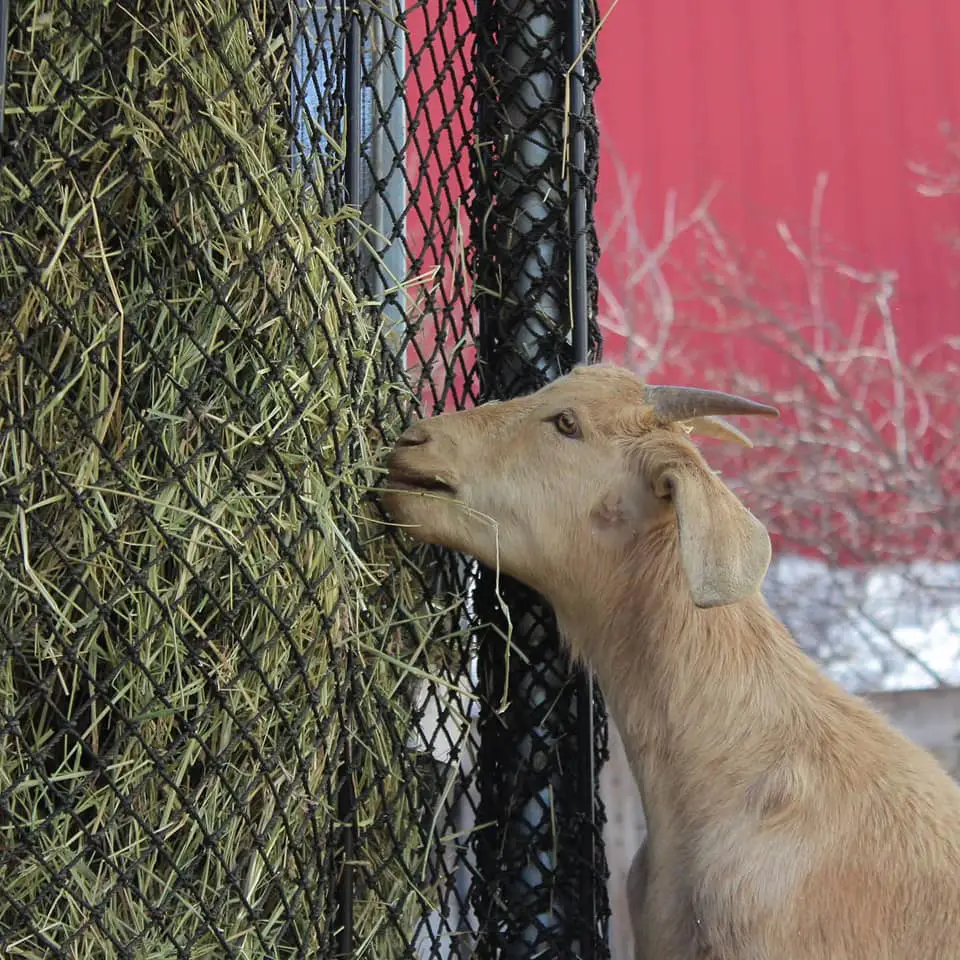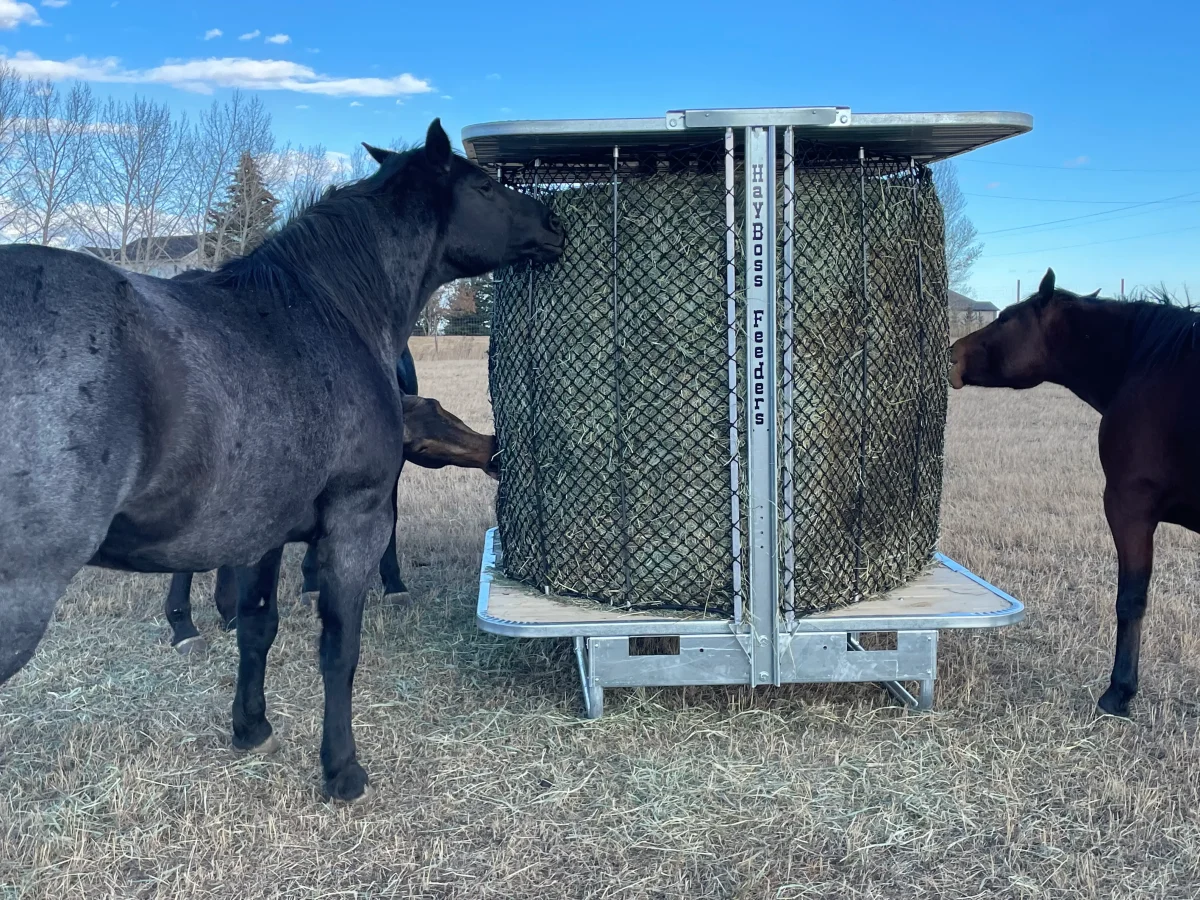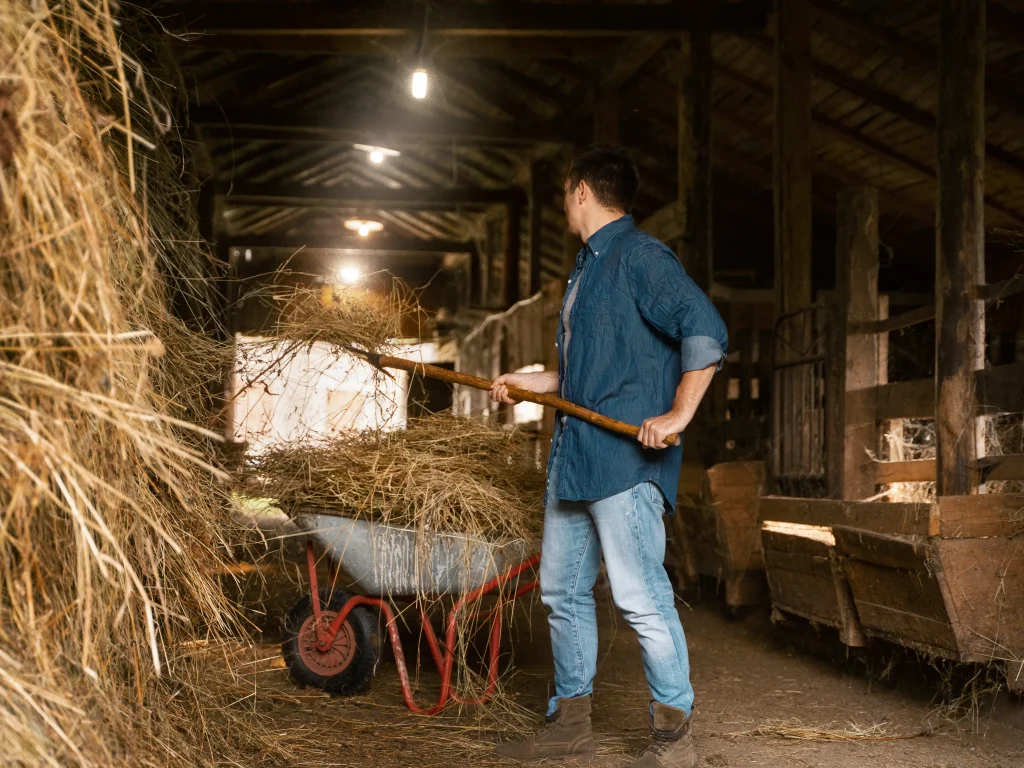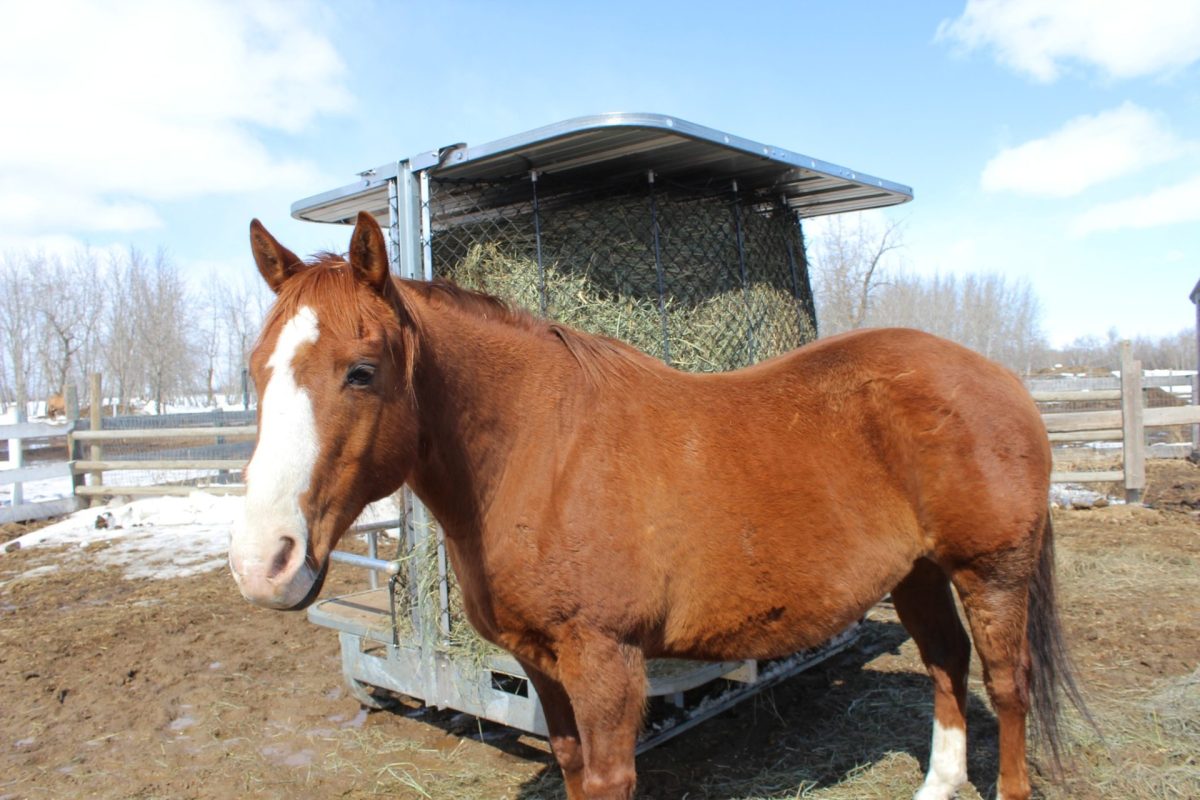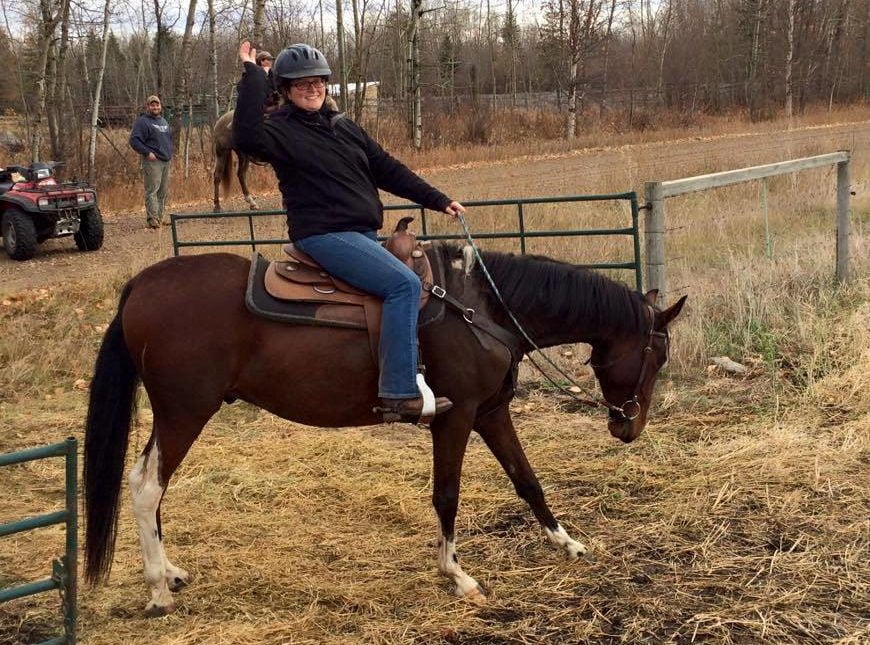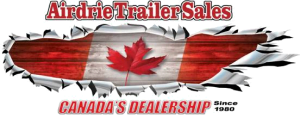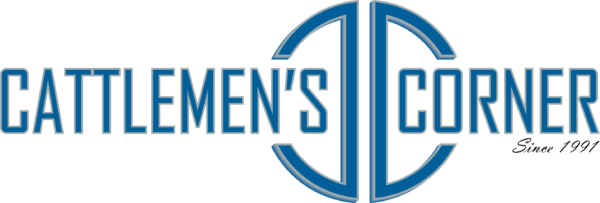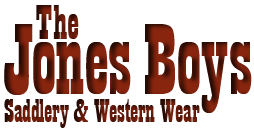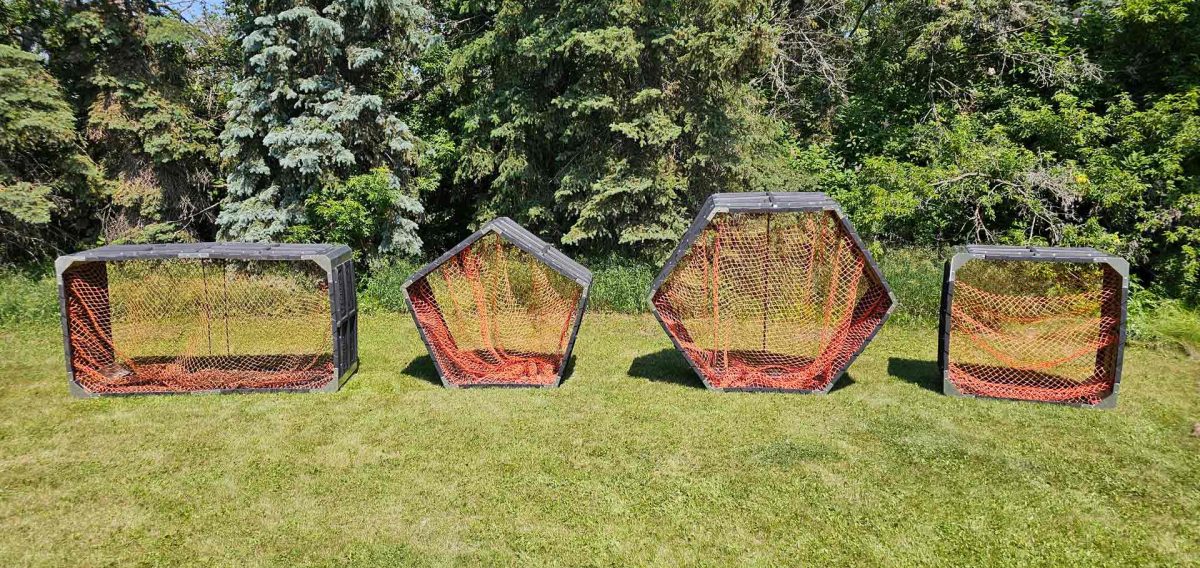
Ah, the never-ending battle with hay waste. It’s something known to all of us North American and Canadian farmers. You spend good money on those precious bales, only to see a significant chunk disappear into the mud or get trampled underfoot by your eager (but messy) eaters. It’s enough to make anyone feel completely frustrated!
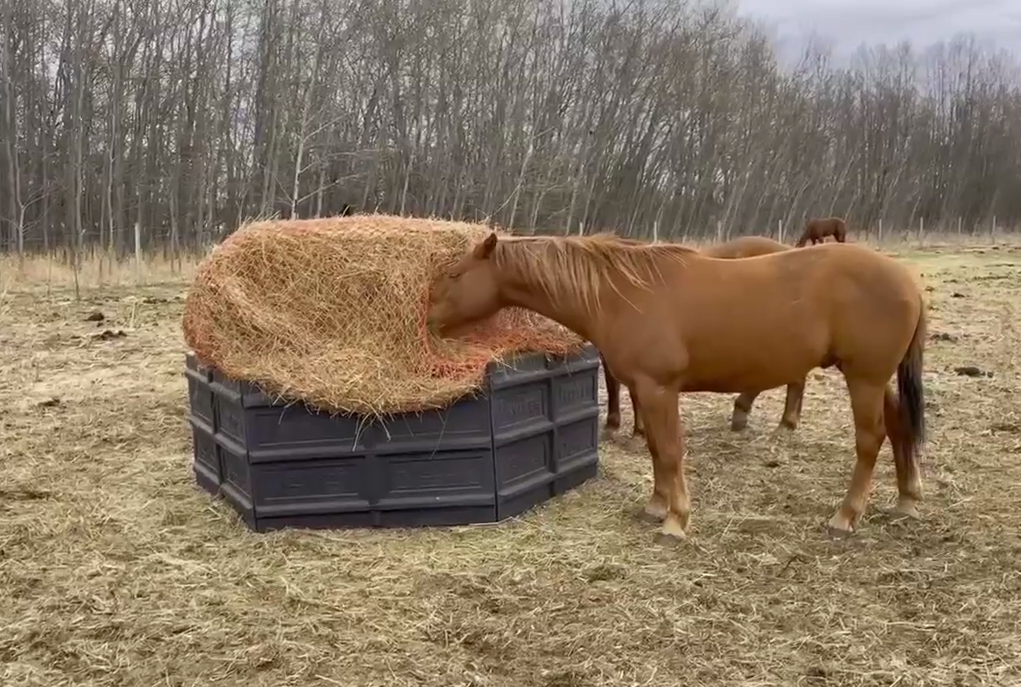
That’s why I’m excited to introduce you to a true game-changer: the HayBoss HEX Large Round HayRing Feeder. This cutting-edge feeder is built to simplify your routine and your animals happier. This innovative feeder isn’t just another pretty face in the hay feeder market. It’s a thoughtfully designed system built to save you money, minimize waste, and keep your animals happy and healthy.
The HEX Appeal: A Shape with Benefits
The HayBoss HEX isn’t your average round feeder. It boasts a unique hexagonal design that might seem like a small detail, but trust me, it makes a big difference.
Here’s the science behind it: Round feeders leave those pesky leftover pockets where hay gets wasted and trampled. The HEX design, with its straight sides, eliminates those dead zones, allowing your animals to access every last bit of precious forage.
A recent study found that hexagonal feeders can reduce hay waste by up to 15% compared to traditional round feeders. This means major cost savings for you and reduced waste for the environment.
Benefits for You and Your Animals: A Win-Win Situation
Now, let’s talk about the real payoff: how the HEX benefits both you and your furry (or feathery) friends.
For the Farmer:
- Save Money, Save Hay: Less wasted hay means more money in your pocket. It’s a simple equation. The HEX design minimizes hay spoilage and cuts down on the need for constant refilling, saving you both time and resources.
- Back-Saving Design: Let’s face it, lugging around heavy hay bales can take a toll on your back. The HEX is designed with easy loading and handling features, making those chore days a breeze.
- Peace of Mind: HayBoss feeders are built to last, using high-quality materials that can withstand even the harshest weather conditions. This brings less maintenance and more ease for you.
For the Animals:
- Happy and Healthy Herds: The HEX encourages natural grazing behavior, which is essential for animal well-being. They can nibble at their own pace, mimicking how they would eat in the wild, keeping them stimulated and reducing stress.
- Fairness for All: The design allows for even feeding throughout the herd, reducing competition and preventing those dominant animals from hogging all the good hay.
- Cleaner Eating: The HEX design minimizes the chance of hay getting trampled and contaminated by dirt and manure. This keeps your animals healthier and reduces the risk of respiratory problems caused by dusty hay.
HayBoss HEX: Built Tough for the Toughest Jobs
Durability is key on any farm. The HayBoss HEX is built to endure the elements and your rowdy farm crew. It’s constructed with heavy-duty galvanized steel that can handle even the most enthusiastic hay consumers. The unique hexagonal design adds structural integrity, ensuring your feeder stays strong for years to come.
The HEX vs.The Rest: Why Choose Smarter?
Let’s be real, there are plenty of hay feeders on the market. So, what makes the HEX stand out? Here’s a head-to-head comparison with traditional round feeders:
| Feature | HayBoss HEX | Traditional Round Feeder |
| Waste Reduction | Up to 15% less wasted hay | Higher hay waste |
| Ease of Use | Easy loading and handling features | Can be cumbersome to load |
| Durability | Heavy-duty galvanized steel construction | Prone to rust and damage |
| Animal Health Benefits | Encourages natural grazing, reduces stress | Can lead to uneven feeding |
The choice seems clear, doesn’t it? The HayBoss HEX offers a clear advantage in terms of waste reduction, ease of use, and animal health benefits.
Pro Tips for HEX Success: Getting the Most Out of Your Feeder
Now that you’re convinced you need a HEX feeder in your life (and let’s be honest, who wouldn’t be?), here are some pro tips to get the most out of it:
- Loading Like a Pro: When loading your HEX feeder, start by placing the bale on its end and use a tractor or loader to push it into the feeder. This ensures the hay is evenly distributed and minimizes waste.
- Location, Location, Location: The ideal placement for your HEX feeder depends on your specific setup, but generally, you want it in a well-drained area with easy access for your entire herd. You might want to consider placing it near a shelter or windbreak to provide extra protection from the elements.
- Extending the Life of Your HEX: You know a little preventative maintenance goes a long way. Regularly inspect your HEX feeder for any signs of wear and tear. Tackle any minor issues promptly to avoid potentially bigger problems in the future. You can also expand the life of your feeder by giving it a good cleaning every now and then.
HayBoss HEX: FAQs: Answering Your Burning Questions
Before you rush out and buy your very own HEX feeder, let’s address some common questions you might have:
- What size bales does the HEX feeder accommodate?
: The HayBoss HEX is designed for large round bales. - What is the dimension of the HEX feeder?
: The dimension is 48 × 22 × 32 inch. - Does the HayBoss HEX come with a warranty?
: Yes, HayBoss feeders come with a limited warranty. For specific warranty details, refer to the HayBoss website or contact your local dealer.
Final Takeaway: Invest in Smarter Feeding
The HayBoss HEX Large Round HayRing Feeder is more than just a feeder; it’s an investment in the well-being of your farm and your animals. It reduces hay waste, saves you time and money, and promotes a healthier environment for your herd.
If you have other requirements, Hayboss Feeders also offers Standard Hayboss feeders, DIY Feeders, Penpal Feeders, and many more!
Ready to experience the HEX difference? Visit the HayBoss website today to learn more about the HEX feeder and find a HayBoss dealer near you! Don’t let hay-related headaches slow you down any longer. Make the switch to the HayBoss HEX and watch your farm thrive.


